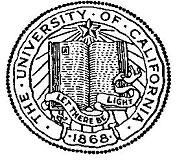
|
|
IN MEMORIAM
Jules Andrew Fejer
Professor Emeritus of Applied Physics
US San Diego
1914-2002
Jules Fejer died December 21, 2002 in La Jolla. He was a distinguished radio scientist who made fundamental contributions to our understanding of the Earth's ionosphere, and a very gentle man. He was truly an international scientist, having worked for a year or more in eight different countries. He was fluent in three languages and competent in two more. His long and varied career, his mild demeanor, and his hidden talents (he was a daemon skier), have been an inspiration to all who knew him. He is survived by his wife Ruth, his daughter Stella Lohmoeller, his brother Stefan, his step-daughter Cecile Murray, Ruth's children Miriam Sievers and Nathanial Antler, 3 grandchildren, and 8 step-grandchildren.
Jules was born in Budapest when it was in the Austro-Hungarian Empire, before a period of great turbulence. He took to Mathematics, in the Hungarian tradition, and won the National Mathematics award for high school graduates in 1931. He studied Electrical Engineering at Eidgenossische Technische Hochschule (ETH) in Zurich graduating in 1936. He found ETH and Zurich very stimulating and appreciated both the beauty and the isolation of Switzerland at a time when National Socialism was emerging in Germany. After graduation he worked on radio engineering in Budapest until it became clear that he should leave Hungary. He arrived in South Africa early in 1939. When war broke out he was accepted into the army and became a member of the secret Special Signals Service (although technically an enemy alien). He met and married Francisca du Plessis, who had a daughter Cecile, in 1942. Their daughter Stella was born a year and a half later.
After the war Jules worked as a radio engineer at the Council for Scientific and Industrial Research CSIR and studied engineering part time at the University of Witwatersrand. However, his career changed drastically in 1950 when CSIR sent him, with his family, to Cambridge for a year. At that time the radiophysics group at Cambridge, which included Jack Ratcliffe, Phillip Clemmow, Kenneth Budden, and Basil Briggs, was leading the study of ionospheric radiophysics and Jules was swept up in the effort. He became a theorist and published two classic papers in that year. The first, published in the Proceedings of the Royal Society, was concerned with diffraction of radio waves passing through an irregular refracting medium. It was the first paper to correctly describe angular scattering. The second was one of the first theoretical papers on magnetospheric physics. In this paper he showed that the ionospheric dynamos in the two hemispheres would short out through the magnetosphere if they were not exactly symmetrical, and this would modify the expected geomagnetic variations.
Jules continued this work on return to CSIR, concentrating for some time on D-region effects, such as cross-modulation of two pulsed waves in the ionosphere. He received his D.Sc. in 1959 for a thesis consisting 6 fundamental papers. His work caught the attention of Colin Hines, who invited him to Ottawa to the Defense Research Telecommunications Establishment in 1959, where he thrived in a small but very active group including Colin, Ian Axford and George Reid. During this period he wrote a fundamental paper on incoherent backscatter, explaining why the width of the backscattered echo was determined primarily by the ion thermal velocity rather than, as had been expected, by the electron thermal velocity. In 1962 Jules and family moved south in search of a warmer clime. After a short time with General Motors in Santa Barbara, they moved to the Southwest Center for Advanced Studies in Dallas where they stayed until 1965.
Jules was a key member of the group of ionospheric physicists assembled by Henry Booker in 1966 to start the new "Applied Electrophysics" department (now Electrical and Computer Engineering) at UCSD. Other senior members were Hannes Alfven, Ian Axford, Ken Bowles, and Peter Banks. A citation analysis by historian Stewart Gillmor of Wesleyan University found that 90% of the "most influential" papers on the ionosphere could be traced to this group! Unfortunately Cisca, who had developed cancer in Santa Barbara, died in La Jolla in 1969. Jules later married Ruth Leavenworth who had a daughter and son of her own.
Jules retired from UCSD in 1976, but did not retire from research. He moved, following Ian Axford, to Lindau, where he guided Atmospheric Research at the Max Plank Institut fur Aeronomie (MPAE). At the time MPAE had a very large ionospheric heating experiment, the STARE/SABBRE auroral radars, the SOUSY MST radar, and part of the responsibility for the EISCAT radar system. Jules received the John Howard Dellinger Gold medal from the International Scientific Radio Union in 1981. On retiring from MPAE at the compulsory retirement age of 68, he first spent some time at EISCAT in Tromso, Norway. Following this he directed Atmospheric Sciences at Arecibo Observatory from 1982 to 1984. He was visiting scientist at the University of Illinois at Urbana-Champaign in 1984-85, finally returning to UCSD in 1985. Jules was elected a Fellow of the American Geophysical Union in 1990. He continued to guide graduate students until 1995, when he commented that he would miss the students but he was relieved not to have to write any more funding proposals!
W. Ian Axford
Kevin B. Quest
Barnaby J. Rickett
William A. Coles, Chair